Art & Design
Why is Art and Design important?
Art and Design allows pupils to understand creativity and expression. It allows children to develop an understanding of space and teaches then how to successfully record the visual. Pupils will develop an array of transferable skills through Art and Design work and become more aware of the advancing world around them.
Key Skills Required
- To be able to draw from observation.
- To understand how to use the influence of other artists to develop ideas.
- To learn and be able to use subject specific vocabulary.
- To be able to collect and present visual information.
- To be able to work using a variety of different scales.
- To be able to comment and give opinion about the work of others, both verbally and in written form.
Teachers
Ms S Bona - Head of Department
Mr K Brankin
Curriculum Map
KS3
Topics Covered In KS3
Number of lessons per week: 1
Topics Covered: Visual elements; Contemporary artist extended project (Michael Craig Martin); Mastery of Visual elements; Contemporary artist extended project - Day of the Dead, Gargoyles and Damien Hirst, Portraiture, Architecture, History of Art.
Pupils cover the formal elements of line, tone, texture, colour, shape, form and pattern. They will use the inspiration of Michael Craig-Martin’s man-made objects to draw from observation. Pupils will learn to draw using different scales, how to overlap objects and how to combine colours together within a piece of work.
Materials Used: Pencil, Pen, Water colour, Acrylic, Collage, Ceramics, Print making
Homework
Homework will be set in accordance with the homework timetable on a weekly basis. The homework will reinforce learning and provide opportunities for more independent learning. All homework will be uploaded onto ‘Show My Homework’ at the start of each week.
Assessment Details
Pupils are assessed regularly. Diagnostic monitoring will take place twice per half term. At the end of each project there will be a test to recap new vocabulary and definitions.
Revision Support
- www.artnet.com
- www.artincontext.org
- www.artlex.com
- www.artchive.com
- www.bbc.co.uk/schools/gcsebitesize/art
Key Tips for Success
- Bring in all necessary equipment for every lesson.
- To ask for teacher assistance if there is any misunderstanding on tasks.
- To ask for help with homework in advance of deadlines.
- To print out homework prior to lessons.
How can a parent help their child succeed?
- Provide essential art resources.
- Encourage your child to discuss their artist ideas with you and encourage your child to explore art.
- Visits to galleries greatly increases pupils’ understanding of the artistic world.
KS4
Course outline
GCSE Art and Design
Exam 40 % Coursework 60 %
Exam Board: OCR
What type of student succeeds at Art and design?
Art and Design is a demanding GCSE. It requires resilience and a willingness to work through problems and reflect on ones work independently. A love of creativity, awareness of oneself and the surrounding world is also essential. We offer a broad and balanced curriculum that supports, challenges and excites our students. This rigour not only gives our students the fulfilment and joy of mastering skills within Art but also allows them to analyse and discuss their outcomes with greater sophistication.
Subject requirements at GCSE
A minimum of a Grade C at Art and Design at key stage 3 is required in order to study Art and Design at GCSE. The course requires a strong independent work ethic from the outset.
Complementary subjects
Art works well with a wide variety of subjects.
Homework
Students receive homework once a week. Art and design is best learned through constant development of skills coupled with in-depth analysis of other Artwork, artists and artefacts.
KS5
Course outline
AS Art and Design – Exam 100 %
A2 Art and Design – Personal Investigation 60 % Exam 40 %
Exam Board: OCR
What type of student succeeds at Art and design A Level?
Art and Design is a demanding A Level. It requires resilience and a willingness to work through problems and reflect on ones work independently. A love of creativity, awareness of oneself and the surrounding world is also essential.
Subject requirements at GCSE
A minimum of a Grade 5 at Art and Design GCSE is required in order to study Art and Design at A Level. The course requires a strong independent work ethic from the outset.
Complementary subjects
Art works well with a wide variety of subjects. For example, Maths and art are required to study architecture, ICT and art are required to study graphic design.
Homework
Students receive homework 3 times a week. Art and design is best learned through constant development of skills coupled with in-depth analysis of artists and artefacts. Art requires a lot of independent study, particularly for the “Personal Investigation”. Students must develop a clear understanding of the cultural context of their work by visiting galleries and museums, finding interesting and new interpretation that are reliable and valid.




